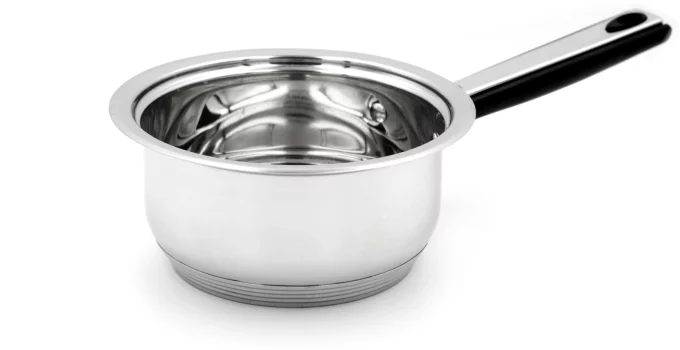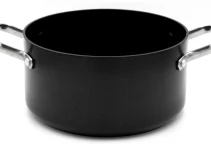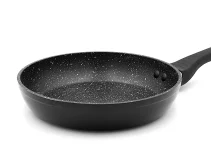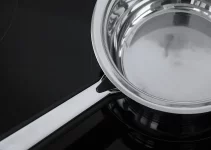I’m pretty sure that the words heavy-bottomed and saucepan are pretty self-explanatory as an answer to the question what is a heavy-bottomed saucepan.
All that’s left to do is to establish if we want to own a heavy-bottomed saucepan. Or if we have no need for one. The easiest way to do that is to see what they’re used for.
What Is a Heavy-Bottomed Saucepan?
There are recipes that mention that we should use a heavy-bottomed pot or pan. It can leave some amateur cooks wondering what kind of pot or pan they should use. Do they already have such a thing in the kitchen or do they need to go shopping?
How can we make that distinction from the saucepans we have in our kitchen or see in shops?
How can we tell if it’s a heavy-bottom pan or pot or it’s a thin pot or pan?
Frankly, you can easily spot them.
Literally, the bottom is thicker than the walls of the pan. Just by looking alone we can clearly see that the bottom is thicker than the rest of the pan.
The major advantage of heavy-bottomed saucepans is that the thick base ensures that they absorb and distribute heat more evenly.
Thinner pots can be plagued by hotspots. Some areas will heat up more quickly than others. It can cause food to burn easily.
For example, if you’re making a sauce or a stew or things like that, you should mix the food from time to time to ensure that the liquid gets heated evenly and the ingredients cook evenly when we have a pan with hotspots.
Stainless steel heavy-bottomed saucepans
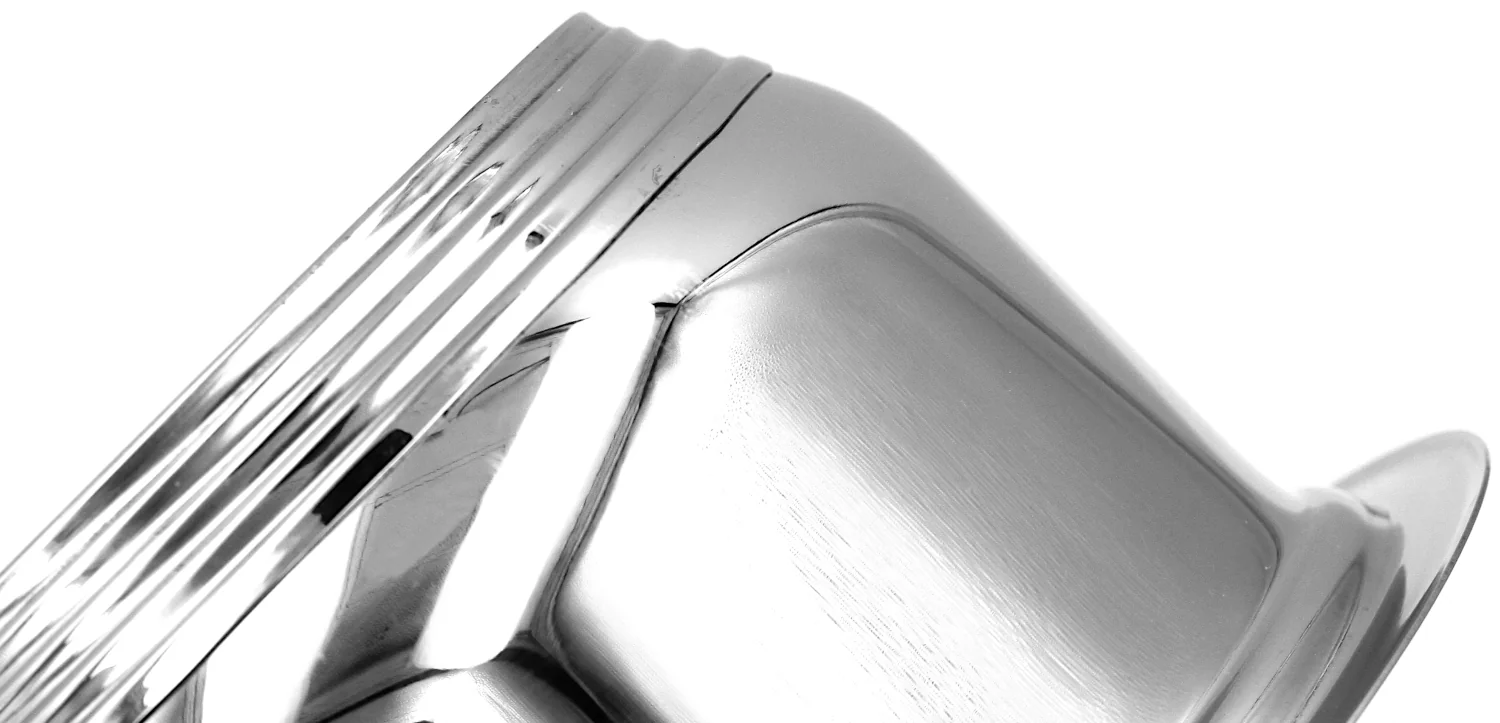 Thus, if we’re looking for some of the best saucepans on the market, you’ll quickly notice that most of them have a thicker bottom than their walls.
Thus, if we’re looking for some of the best saucepans on the market, you’ll quickly notice that most of them have a thicker bottom than their walls.
For example, one of my favorite saucepans, the Dcigna Saucepan with Pour Spout, 1.5 Quart can be classified as a heavy-bottom saucepan. The base clearly stands out as being thicker. I also recommended it as my favorite pan to boil milk in.
Another thing you’ll notice is that these pans with a thicker base are made of stainless steel.
The more expensive ones will mention that they’re made from a classic tri-ply construction. These models are also known as being fully-clad.
Simply it means that the aluminum core is bonded together with 2 layers of durable, stainless steel. The aluminum is sandwiched between two layers of stainless steel.
This combination of two materials in three layers is used for ensuring fast, even heat distributions. It also ensures durability.
For example, we have the All-Clad Stainless Steel Sauce Pan, 3 Quart that is made using this tri-ply construction. The 3 quart size is also decent for a high variety of foods.
Even if it doesn’t have a thick base, it’s not a heavy bottom per se, I still believe that it can be used for all recipes that call for one. It’s just very well made.
Most of them are also induction compatible.
There are also 5-ply cookware sets for those who can spend about $500 or more on a set of stainless steel pots and pans.
Besides stainless steel, they can also be made from copper and aluminum.
How thick should a saucepan be?
First, we have the uniform-looking saucepans. They’re the same thickness on the bottom and on the sides.
If they’re fully-clad and made very well, even if their thickness is uniform, they can compete in quality and capabilities with heavy-bottomed models.
Usually, for a good heavy-bottomed saucepan, the base looks to be about two times thicker than the walls.
A nice thickness is desirable.
On the other hand, if the base is too thick, the pan will take too long to heat so it’s not the most energy efficient cookware.
It must be balanced, neither too thick, nor too thin.
Very cheap saucepans tend to be quite thin. They’re good for making a soup or boiling water and making some chocolate.
But they’re not the best tools for more delicate tasks, for ingredients that can burn or split easily.
Heavy-Bottomed Saucepan Uses
Do we always need one with a thicker bottom? Let’s talk about their uses.
I would recommend buying a heavy-bottom saucepan because they’re more versatile. They are more appropriate for a wide range of tasks.
Plus, whenever we’re looking for amazing saucepans, we should always keep in mind that we need pots and pans that distribute heat evenly.
The recipes that call for the use of a heavy-bottomed saucepan involve cooking ingredients that could easily burn or split.
If you want to boil milk, make cheese, heat dairy, cook delicate sauces or make sugary confectionery, fudge, then you’ll want to know what a heavy-bottomed saucepan is.
Moreover, I enjoy buying heavy-bottomed saucepans because they’re solid. You know that you can cook anything in them without fear.
Whether you need to cook sugar or boil milk without it sticking or cook a soup or a stew, you don’t have to wonder whether it will be a good pan for the task or not,
Despite the name, these pans with thick bottoms, that look twice as thick as the walls of the pan, are made for delicate tasks.
They distribute heat evenly and they work well every time.
If you want to make custard, puddings, rice pilaf or browned butter, high-quality saucepans will do the job.
All in all, after getting the answer to the question what is a heavy-bottomed saucepan, I hope you’ll see just how essential such a piece of cookware is in the kitchen of an amateur cook.

